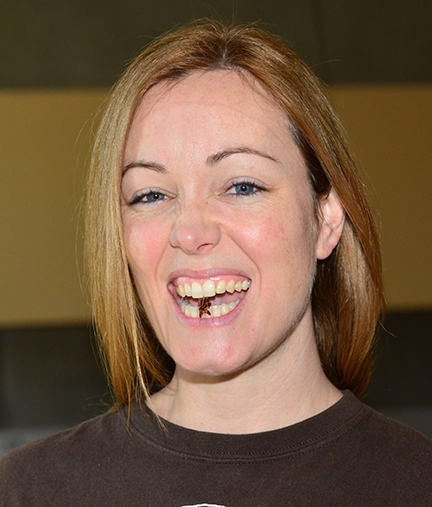
So we did…Because the Bohart Museum of Entomology is hosting an open house on entomophagy from 1 to 4 p.m., Saturday, Sept. 21 in Room 1124 of the Academic Surge Building on Crocker Lane--and you're invited.
The event, free and family friendly, is an opportunity to participate in the joy of eating...drum roll...insects! And for that, you'll get a button proclaiming “I ate a bug at the Bohart."
If you're not into eating insects, you can cuddle and photograph the critters in the live "petting zoo," or view insect specimens. Just remember that 80 percent of the world consumes insects as a protein source. Some 1700 species of insects are edible.
“Many insects are quite edible and if you try them, you might find that crickets are the new shrimp,” says Lynn Kimsey, director of the Bohart Museum and professor of entomology, UC Davis Department of Entomology and Nematology. “Personally, I like flavored mealworms."
"Just think of insects as terrestrial shrimp or crab," adds senior museum scientist Steve Heydon.
Now, what do other entomologists and bug ambassadors think about eating insects?
Danielle Wishon
Danielle Wishon, who holds a bachelor's degree in entomology from UC Davis, is an entomophagist. She likes baking with mealworms when she's not working five jobs, including (1) teaching assistant in the lab of UC Davis alumnus Fran Keller, assistant professor at Folsom Lake College, and (2) police services officer for the Lafayette Police Department.
“Mealworm cookies are visually fun and taste good,” Wishon said. “It's my understanding that people with nut allergies will sometimes make cookies and cakes with ground-up mealworms because they have a ‘nutty flavor' but don't bother their allergies. Crickets are good as well, but only if they are baked or sauteed.”
Rather than asking "why,” Wishon asks "why not?"
“Most of the world includes arthropods in their diet,” Wishon noted. “We do, too; we just think of them differently because we pull them out of the sea. Depending on the arthropod, they are healthy, abundant, and an eco-friendly alternative to other sources of protein.”
Back in 2014, Wishon participated in a “Beer and Bugs” event (Bugs and Beer—Why Crickets and Kölsch Might Be Matches in Heaven” at the Robert Mondavi Institute for Wine and Food Science. It featured UC Davis Professor Charles Bamforth, aka “The Pope of Foam,” and David George Gordon, aka "The Bug Chef," extolling the virtues of beer and bugs. Guests sampled eight different insect-inspired creations in what was billed as "an ultimate tasting experience."
Wishon ate a baked cricket. A very large cricket.
She liked it, too!
That's not to say she likes consuming all crickets. “I once ate a boiled cricket and it was absolutely disgusting!”
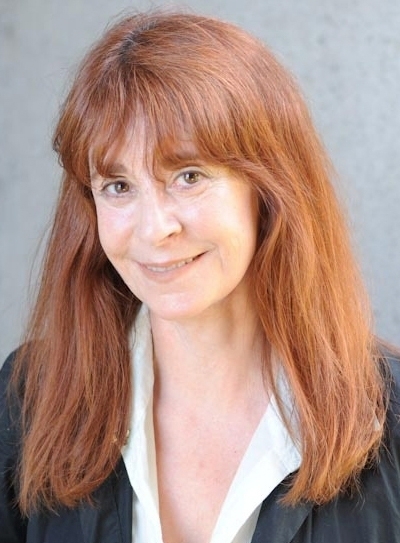
When we asked entomologist Leslie Saul-Gershenz, who holds a doctorate in entomology from UC Davis and is associate director of research, Wild Energy Initiative, John Muir Institute of the Environment, UC Davis campus, if she has cooked with insects and eaten them, she responded:
“Many times! I have baked chocolate chip chirpies, made cricket dip surprise, mealworm pizza and eaten all of them. I have eaten beetle larvae in Papua, New Guinea and Peru and grasshoppers in Mexico. Seriously, they are important sources of protein all around the world and they are eaten regularly in most cultures except ours. We, of course, eat their close relatives the crustaceans without hesitation.”
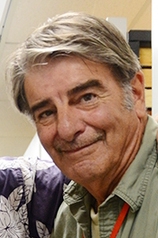
Bohart Museum associate and naturalist/photographer Greg Kareofelas of Davis remembers when he and colleague Danielle Wishon participated in the “insect-eating affair” at the Mondavi Institute. Frankly, he doesn't make a habit of eating insects. "My favorite is pizza," he says.
Kareofelas can usually be found at the Bohart Museum open houses showing visitors the Lepidoptera (butterflies and moth) section with curator and entomologist Jeff Smith.
“I think it was Dan Janzen (noted evolutionary biologist and conservationist affiliated with the University of Pennsylvania) that used to say he ‘chewed' butterflies and moths to see how they would taste to birds--the “distasteful monarch” thing," Kareofelas related. "Reading that was the closest I have gotten to eating Leps (Lepidopderans).”
“I will try and keep an open mind at the open house,” Kareofelas promised. “But my favorite is still pizza!”
'I Ate a Bug at the Bohart'
Various companies, including Hotlix, Exo and Chirps Chips, are providing samples for the Bohart Museum open house, says education and outreach coordinator Tabatha Yang. Visitors will learn about entomophagy, sample insect-based foods, make buttons (“I ate a bug at the Bohart”), view the collection, and handle insects from the petting zoo, which includes Madagascar hissing cockroaches, walking sticks or stick insects, tarantulas and praying mantids.
The event coincides with "Student Move-in Day," when students head back to campus for the academic year, and family and friends help them move. Many campus visitors are expected to tour the Bohart Museum.
The Bohart Museum, founded by noted entomologist Richard M. Bohart (1913-2007), houses a global collection of nearly eight million specimens. It is home to the seventh largest insect collection in North America, and the California Insect Survey, a storehouse of the insect biodiversity. It also maintains a year-around gift shop, which is stocked with T-shirts, sweatshirts, books, jewelry, posters, insect-collecting equipment and insect-themed candy.
The insect museum is open to the public Mondays through Thursdays from 9 a.m. to noon and 1 to 5 p.m., except on holidays. More information on the Bohart Museum is available on the website at http://bohart.ucdavis.edu or by contacting (530) 752-0493 or bmuseum@ucdavis.edu. (See list of open houses for the 2019-2020 academic year.)
Attached Images:
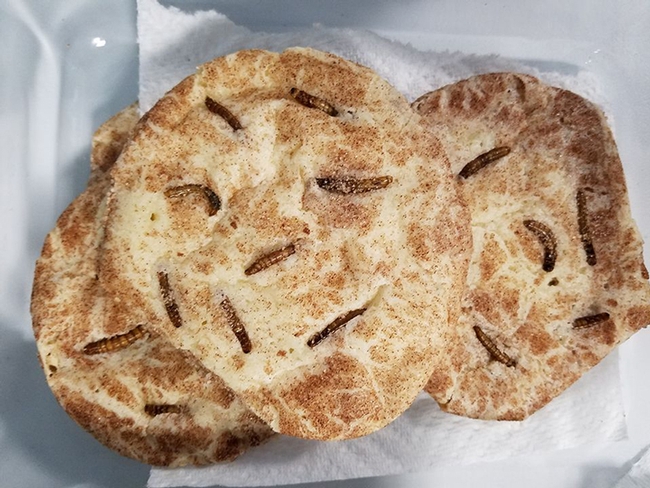
Make a meal out of mealworms? Danielle Wishon baked these mealworm cookies. Yes, they were good. (Photo by Danielle Wishon)
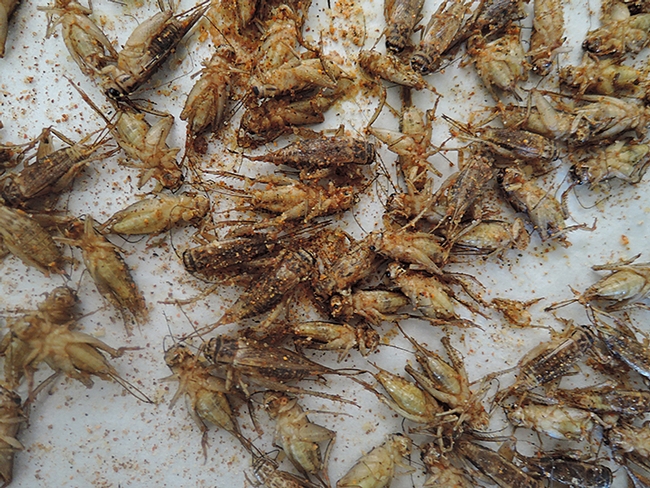
Crickets will be on the menu at the Bohart Museum of Entomology's open house. Visitors are invited to sample them. Crickets are the new shrimp, says Lynn Kimsey, director of the Bohart Museum. (Photo by Kathy Keatley Garvey)